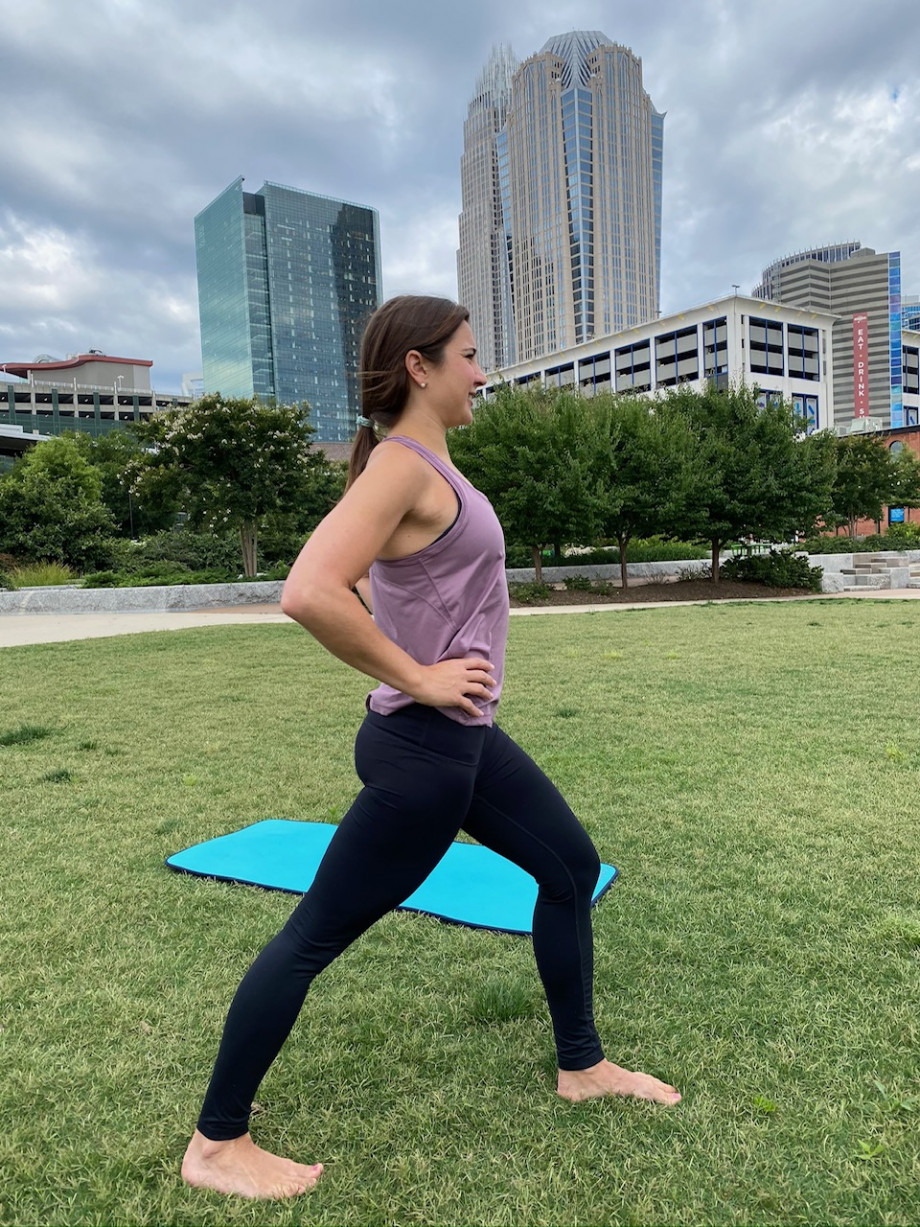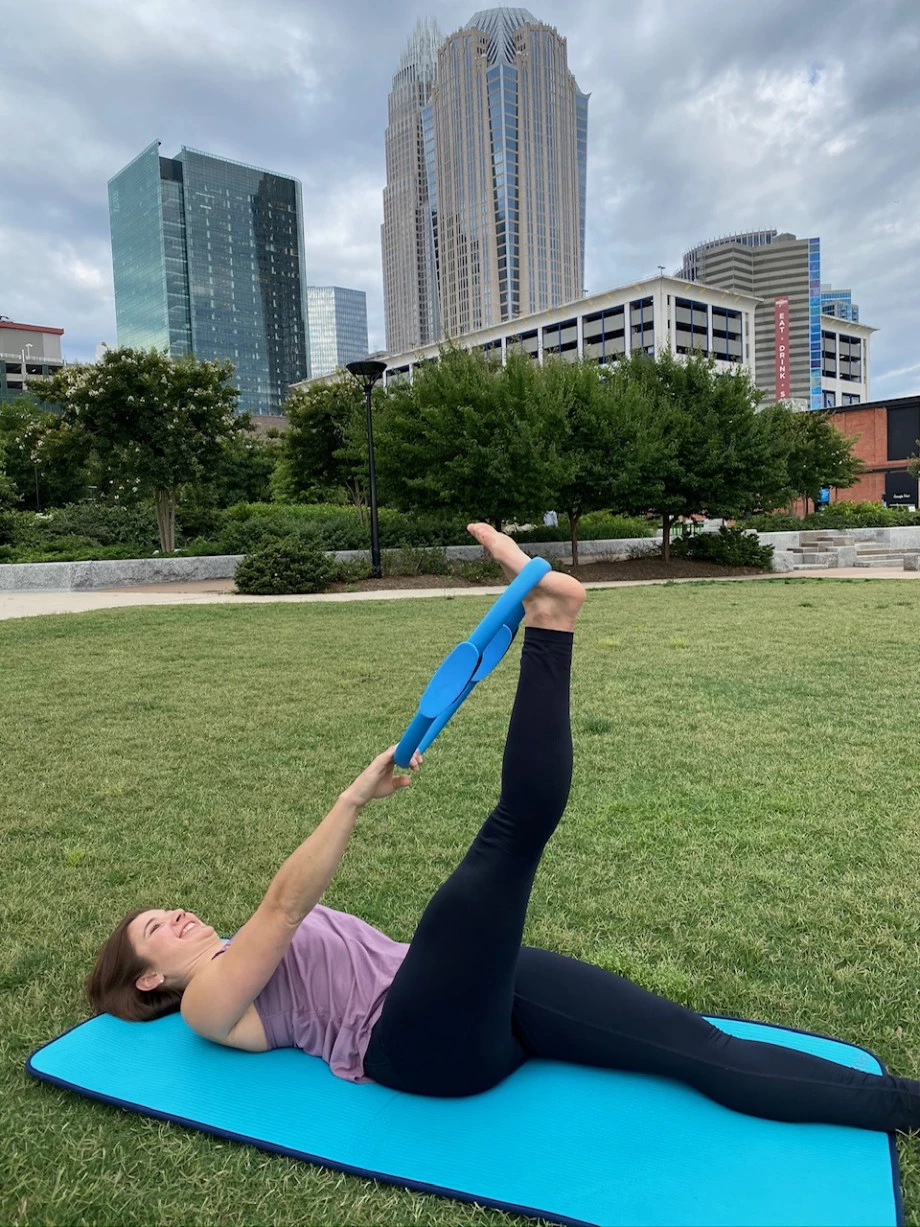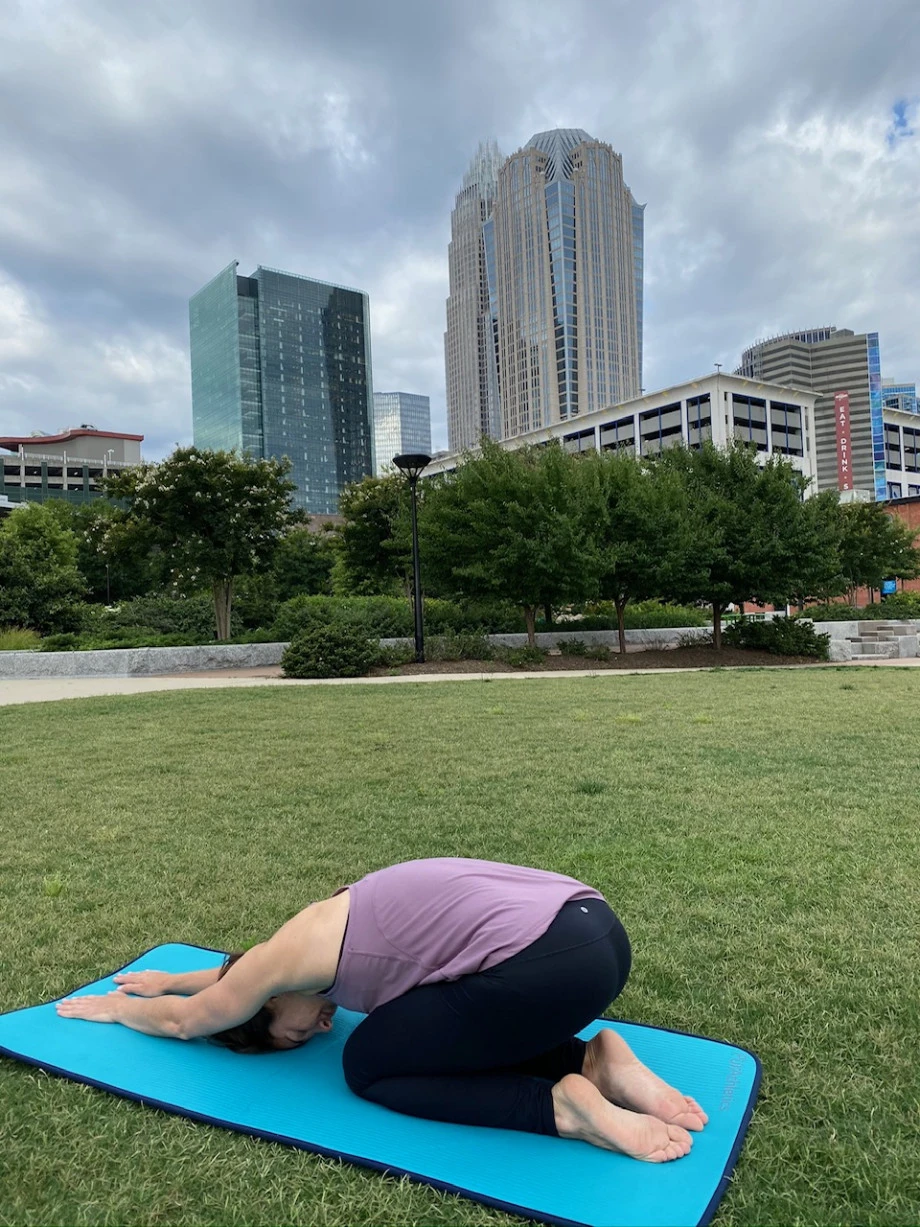How you prime your body for a run and how you recover afterward influence your overall performance. That's where stretching properly both before and after your workout comes into play.
Pre-Run: Dynamic Stretch Warm-up
Dynamic stretching exercises help prepare the body for aerobic exercise and facilitate the correct running technique. Weak or underused muscles result in gait compensations, which can eventually cause repetitive stress injuries (like patellofemoral syndrome).
Abdominal muscles and glutes are important muscles to promote an efficient running stride. Warm up with squats and lunges to activate these muscles.
Squats
- Draw in your waistline and lengthen your spine to engage the abdominals.
- Squeeze the back of the hips to engage the glutes.
- Keep the abs engaged as you sit back, bending the knees and pushing the hips backward while slowly relaxing the glutes.
- When you stand up, think about driving your weight through your heels.
- As you warm up, envision your running stride using the abs to stabilize the torso and the glutes and the quads to propel you forward. Notice how engaging the glutes keeps the knee stabilized.
Lunges
- Lunges are an effective exercise to prepare runners for a single leg stance.
- Use the glutes to keep the knees in line with the toes. This alignment prevents IT Band Syndrome and Patellofemoral Syndrome.
- While warming up, focus on a strong, forward running stride. Think about lengthening the torso and keeping the knee cap facing forward.
Post-Run: Static Stretch Cooldown
Static stretching relaxes muscles and improves ROM (range of motion). It’s best to perform static stretches after running when the muscles are tight from strenuous exercise.
While static stretching is beneficial after a workout, it does inhibit sports performance. Throughout your training, we encourage you to stretch post-run and encourage your friends to do the same.
Here are common muscles that tighten after a run and how to relax them.
Gastroc & Iliopsoas
The iliopsoas muscle often tightens up when we lack a stable push forward.
- Stand with one leg positioned in front of the other.
- Lean forward while keeping the back heel down. This stretches the calf muscle and the front of the hip.
- Repeat on the other side.

Quads & Rectus Femoris
The rectus femoris muscle often tightens up when we overstride.
- Lay on your stomach with your legs extended.
- Lift one heel toward your hips and grab your ankle, gently pulling your ankle toward your hip. This stretches the front of the thigh as well as a muscle that spans from the hip to the knee.
- Slowly return to the starting position and repeat on the other side.

Piriformis
- Lay on your back and bend your knees to place your feet flat on the floor, with your heels close to your hips.
- Cross one ankle over the opposite knee.
- Lace your hands behind the thigh of your grounded leg, and lift this leg to stretch the back of the hip.
- Repeat on the other side.

Hamstrings
- Lay on your back.
- Hold the shoelaces of one shoe or loop a dog leash or other material around one foot.
- Using the shoelaces or other material, gently lift your leg into the air to stretch the back of the thigh.
- Repeat on the other side.

Lumbar Paraspinals
- To enter Child’s Pose, begin on your hands and knees and push your hips backward onto your heels.
- From this kneeling position, extend your arms forward on the mat and lower your chest toward the ground, allowing your thighs and the mat to support the front of your body.
- Walk your hands to one side of the mat, stretching out the opposite side of your body. This stretches the lumbar spine.
- Return to center and walk your hands to the other side of the mat to stretch the opposite side of your body.

Mary Jean McKinnon, PTA, is a physical therapy assistant and pilates instructor with OrthoCarolina’s SouthPark Physical & Hand Therapy office.
We're here to help you stay healthy, informed and uplifted as we navigate unprecedented change in our communities together.
Back




Leave a Comment